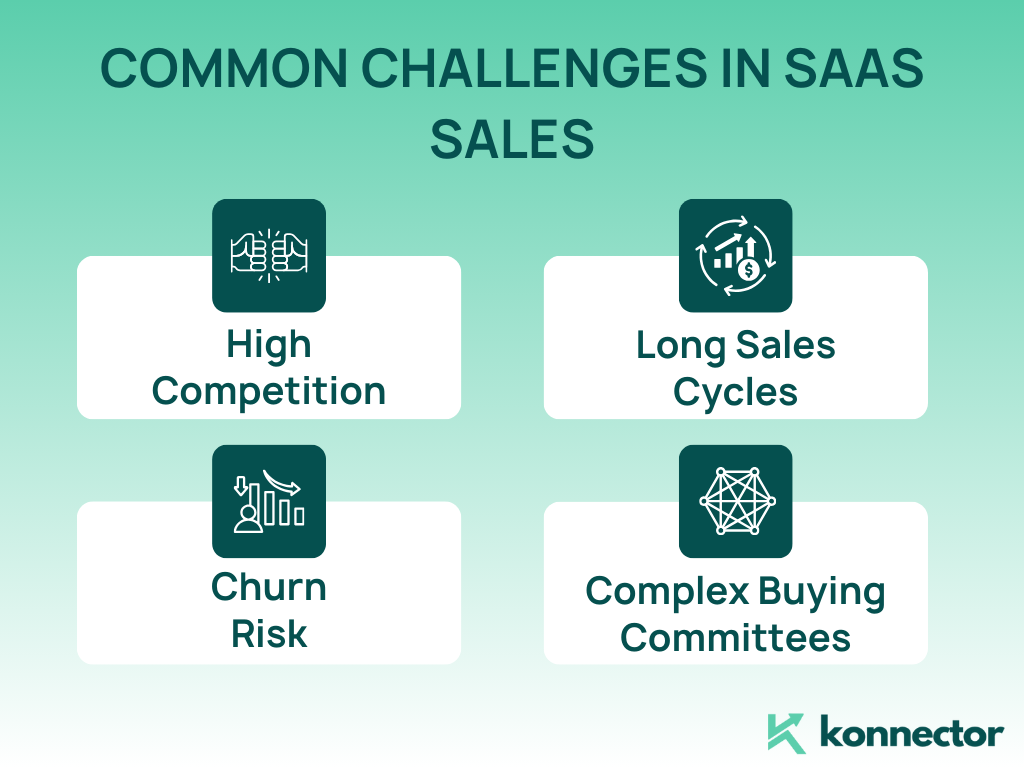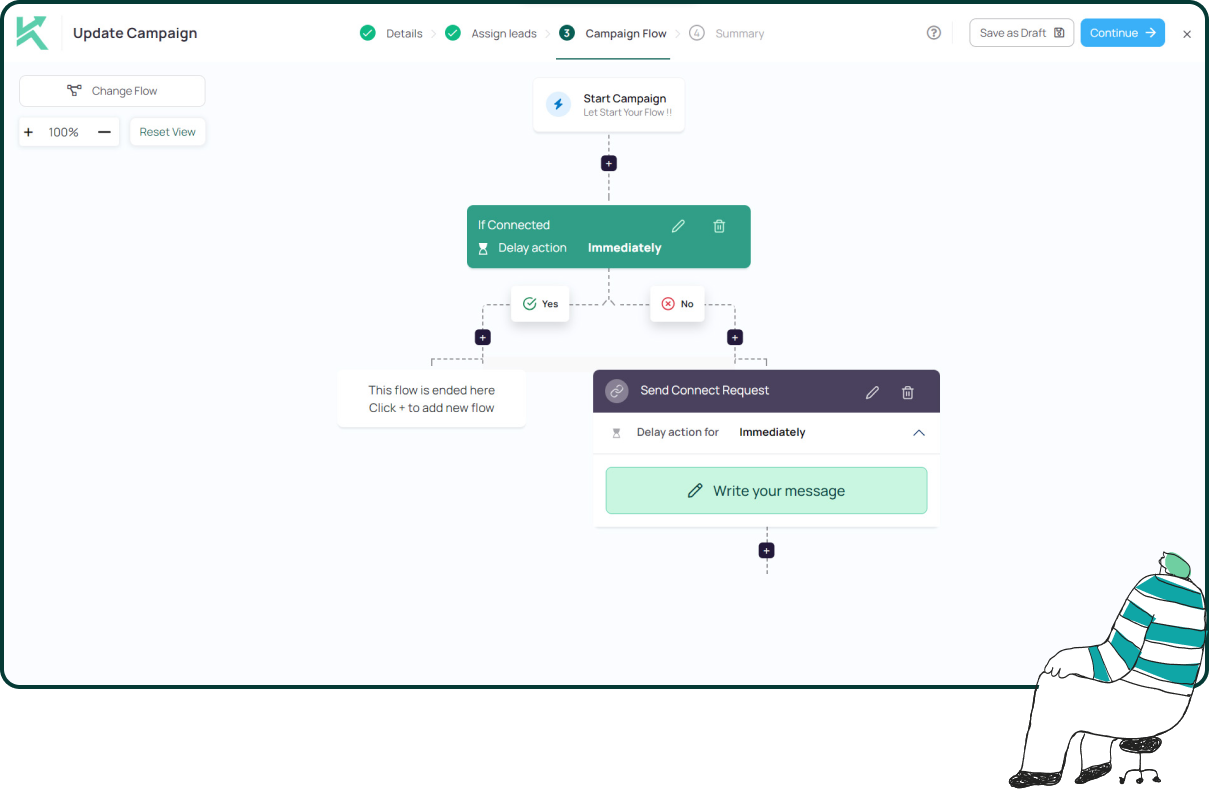SaaS Sales: The Complete Guide to Selling Software
Selling software today isn’t just about having a great product — it’s about mastering a sales approach built for the digital era. SaaS sales combines the precision of technology with the art of relationship-building, requiring reps to guide prospects through discovery, onboarding, and long-term success. This guide breaks down the strategies, models, and tools that can help you close more deals and create customers for life.
Why SaaS Sales Is Different (and Exciting)
In SaaS, you’re not just selling a one-time product — you’re selling a subscription and a long-term relationship that requires ongoing value delivery. Growth depends on acquiring, retaining, and expanding customer accounts through exceptional service and continuous engagement. And with competition moving fast and the market being global from day one, staying ahead requires both agility and a clear value proposition that resonates worldwide.
SaaS sales is less about a single “yes” and more about building long-term trust.
The SaaS Sales Cycle
The SaaS sales journey isn’t a one-off transaction — it’s a structured process designed to guide prospects from awareness to long-term partnership. Each stage plays a crucial role in building trust, demonstrating value, and ensuring customers get the results they expect. Here’s how a typical SaaS sales cycle works from first contact to ongoing growth.

- Lead Generation: Identify potential buyers using targeted prospecting, inbound marketing, and outreach tools like Konnector.
- Qualification: Use BANT or MEDDIC frameworks to confirm fit — budget, authority, need, timeline.
- Product Demos: Show how your software solves a specific pain point, not just a feature tour.
- Negotiation: Handle objections, customize offers, and focus on ROI.
- Closing: Keep paperwork simple and onboarding smooth.
- Expansion: Upsell, cross-sell, and renew contracts with value-led communication.
Key SaaS Sales Models
Not all SaaS products are sold the same way. The sales model you choose depends on your price point, target market, and deal complexity. Understanding these models helps you tailor your strategy, allocate resources effectively, and meet customers where they are in their buying journey.
- Self-Service: Customers sign up and purchase online with minimal sales interaction. Works for low-cost, high-volume SaaS.
- Transactional: Sales reps handle mid-sized deals with short cycles.
- Enterprise: Longer cycles, multiple decision-makers, high-value contracts.
Skills Every SaaS Sales Rep Needs
Closing SaaS deals consistently requires more than a persuasive pitch — it demands a mix of skills that blend product expertise with relationship-building. The most successful sales reps adapt quickly, communicate clearly, and use data to guide every decision. Here are the core skills that set top SaaS sellers apart.
- Industry Knowledge: Understand trends, competitors, and the customer’s tech stack.
- Consultative Selling: Act like a partner, not a vendor.
- Technical Comfort: Be able to explain integrations, APIs, and workflows.
- Data-Driven Decision-Making: Use CRM analytics to improve targeting and forecasting.
- Follow-Up Discipline: Timely, relevant follow-ups increase close rates.
Common Challenges in SaaS Sales
While SaaS sales offers huge growth potential, it also comes with its own set of hurdles. From navigating crowded markets to keeping customers engaged long after the initial sale, reps must be ready to adapt and overcome. Here are some of the most common challenges teams face in selling software — and why addressing them early is critical to long-term success.
- High Competition: With so many vendors offering similar features, it’s easy for prospects to see your product as “just another tool.” To stand out, you need a clear value proposition, a differentiated offering, and proof that you can deliver better results than alternatives.
- Long Sales Cycles: Particularly in enterprise deals, it can take months of demos, negotiations, and stakeholder approvals before a contract is signed. Staying top-of-mind through consistent, value-driven follow-ups is essential to prevent deals from going cold.
- Churn Risk: In SaaS, the real challenge starts after the sale. If customers don’t see value quickly, they may cancel before renewal. Strong onboarding, proactive support, and regular check-ins are key to keeping churn low and customer lifetime value high.
- Complex Buying Committees: Most significant SaaS purchases require input from multiple departments — IT checks compatibility, finance reviews cost, and end-users evaluate usability. Successful reps learn to navigate these groups, address each stakeholder’s concerns, and create alignment around the purchase.

Read more—-> How to Set Up DMARC, DKIM, and SPF Records for Your Domain?
How to Win More SaaS Deals with Konnector
Winning more SaaS deals isn’t just about having a great pitch — it’s about reaching the right people at the right time with the right message. Konnector gives your sales team the automation, personalization, and insights needed to keep your pipeline full and your outreach impactful. Here’s how you can use it to boost conversions and close deals faster.
- Automate LinkedIn Outreach to Generate Qualified Leads Faster: Instead of manually sending connection requests and messages, Konnector lets you set up targeted campaigns that reach hundreds of ideal prospects automatically — saving hours every week while keeping outreach professional and relevant.
- Segment Prospects into Industries and Buying Stages Using Tags: Not every lead is ready to buy today. With Konnector’s tagging system, you can organize contacts by industry, job role, or where they are in the buying journey, allowing you to send the right message to the right person at the right time.
- Run Multi-Step Campaigns for Follow-Ups That Feel Personal, Not Pushy: Schedule a sequence of connection requests, warm-up messages, and value-based follow-ups that build rapport naturally. Every touchpoint can be tailored to the prospect’s interests, so your messages feel like a conversation — not spam.
- Engage with Decision-Makers’ Posts to Warm Them Up Before a Pitch: Konnector helps you like, comment, or follow key prospects before sending a message, so when your outreach arrives, they already recognize your name and see you as a genuine part of their network.
- Track Replies, Profile Views, and Engagement to Prioritize Hot Leads: See which prospects are opening your messages, viewing your profile, or interacting with your content. Focus your time on those showing real interest so you can move deals forward faster.

Practical Tips for SaaS Sales Success
In a crowded SaaS market, small improvements in your sales approach can make a big difference to your close rate. The most effective reps focus on building trust, demonstrating value, and keeping conversations alive until the deal is done. Here are some practical strategies you can apply right away to improve your SaaS sales performance.
- Focus on Outcomes: Instead of leading with features, lead with the results your software can deliver. Show prospects how your solution will help them grow revenue, cut costs, or save valuable hours. Back your claims with real numbers from past customer success stories to make the benefits tangible.
- Leverage Social Proof: Buyers trust other buyers. Share case studies, testimonials, and reviews from clients in the same industry or facing similar challenges. If you have notable brand logos in your customer list, highlight them to instantly build credibility and trust.
- Offer a Trial: A hands-on trial removes uncertainty and gives prospects the chance to experience your value firsthand. Keep the onboarding process simple, provide quick-start guides, and offer support during the trial to ensure they see the “aha” moment as soon as possible.
- Personalize Outreach: Generic pitches get ignored. Reference the prospect’s LinkedIn activity, recent company announcements, or industry-specific pain points in your emails and messages. This shows you’ve done your homework and positions you as a partner who understands their world.
- Follow Up Consistently: Most deals aren’t closed on the first touchpoint. Plan a follow-up sequence that combines different channels — LinkedIn messages, emails, and value-based content. Each follow-up should add something new to the conversation rather than simply asking if they’ve made a decision.

Read more—->Cold Email Setup: The Fast Track to Scalable Outreach
Final Word
SaaS sales isn’t just about hitting a quota — it’s about creating genuine connections with the right people, understanding their challenges, and showing them how your solution can deliver measurable value. The best sales reps don’t just close a deal; they become trusted partners who help their customers succeed long after the contract is signed.
When you combine a relationship-first mindset with the right tools, you unlock real scalability. Platforms like Konnector let you identify decision-makers faster, engage them with personalized outreach, and nurture them with relevant follow-ups — all while saving hours of manual work. This means more meaningful conversations, more qualified pipeline, and more wins.
In the fast-moving world of SaaS, where competition is fierce and retention is king, those who focus on relevance and results will always stand out. Build trust, lead with value, and use technology to amplify your reach — and you’ll not only close more deals but also build a customer base that grows with you year after year.

11x Your LinkedIn Outreach With
Automation and Gen AI
Harness the power of LinkedIn Automation and Gen AI to amplify your reach like never before. Engage thousands of leads weekly with AI-driven comments and targeted campaigns—all from one lead-gen powerhouse platform.
Frequently Asked Questions
SaaS sales refers to the process of selling subscription-based software solutions to customers. Instead of a one-time purchase, buyers pay a recurring fee, making customer retention and long-term relationships essential.
Traditional software sales usually involve a one-time license fee and installation. SaaS sales are subscription-based, hosted in the cloud, and require ongoing customer engagement to ensure renewals and expansions.
Key skills include consultative selling, technical product knowledge, data-driven decision-making, relationship management, and disciplined follow-ups.
It varies based on the sales model. Self-service cycles can be a matter of minutes or hours, transactional cycles typically take days or weeks, and enterprise deals may take several months to close.
Some challenges include high competition, long sales cycles, complex buying committees, and customer churn. Addressing these requires a strong value proposition, consistent follow-ups, and excellent onboarding.
Automation tools like Konnector can streamline lead generation, personalize outreach at scale, track engagement, and ensure consistent follow-ups, helping sales teams close deals faster.
Important metrics include customer acquisition cost (CAC), customer lifetime value (CLV), conversion rate, churn rate, and average deal size.
Focus on delivering value quickly through smooth onboarding, regular check-ins, proactive support, and offering resources that help customers get the most out of your product.






